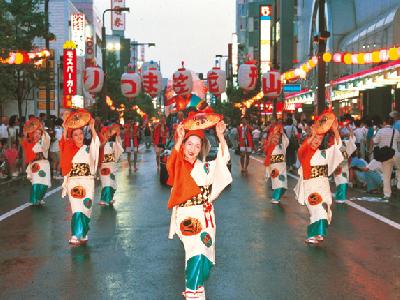|
Suseri Oota is an entertainer born in the Kanagawa Prefecture. Her stage name, also Suseri Oota, is written only in katakana characters, instead of the kanji characters of her real name. The name, Suseri, came from Princess Suseri, a legendary figure who appeared in the book Kojiki (680 A.D.). The Suseri of legend was known to have been driven to pursue whatever she wanted.
Suseri Oota left university before completing her course to become an actor and she began to study acting at Gekidan En Kenkyuujo. After finishing her studies there, she formed a comic duo. When her partner got married and left the duo, she became a solo performer, often accompanying herself on guitar. She loved to perform on stage but she is also highly regarded as a film and TV actor, scenario writer and essayist. Her most successful book is Dekai Onna (Large Woman).
Suseri is 176cm tall and her shoe size is 26cm. This stands out from other Japanese women whose average height is 159cm. Her stature adds uniqueness to her image and it gives her a sharp eye for details in everyday life which many people overlook. She strives to free herself and others from social and aesthetic stereotypes.
Suseri Oota is a performer and an artist who is a person of action and who is not afraid to reveal herself to the public. She is a modern version of the Princess Suseri written about in ancient times. Her uniqueness and courage have set the course for great success in the future.
Suseri Oota left university before completing her course to become an actor and she began to study acting at Gekidan En Kenkyuujo. After finishing her studies there, she formed a comic duo. When her partner got married and left the duo, she became a solo performer, often accompanying herself on guitar. She loved to perform on stage but she is also highly regarded as a film and TV actor, scenario writer and essayist. Her most successful book is Dekai Onna (Large Woman).
Suseri is 176cm tall and her shoe size is 26cm. This stands out from other Japanese women whose average height is 159cm. Her stature adds uniqueness to her image and it gives her a sharp eye for details in everyday life which many people overlook. She strives to free herself and others from social and aesthetic stereotypes.
Suseri Oota is a performer and an artist who is a person of action and who is not afraid to reveal herself to the public. She is a modern version of the Princess Suseri written about in ancient times. Her uniqueness and courage have set the course for great success in the future.
| [→より詳しい記事を見たい方はこちら] | |
| [+ADDRESS] | 
|














